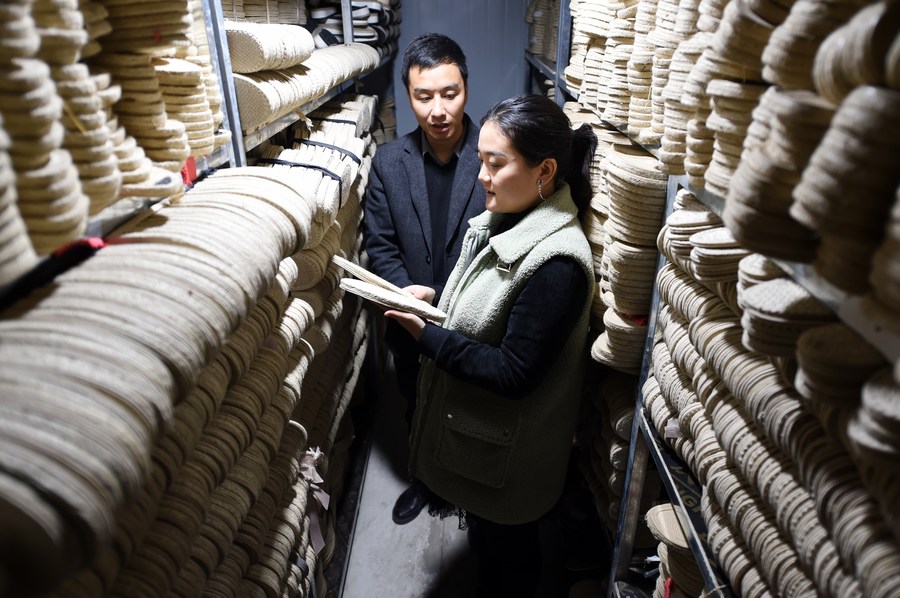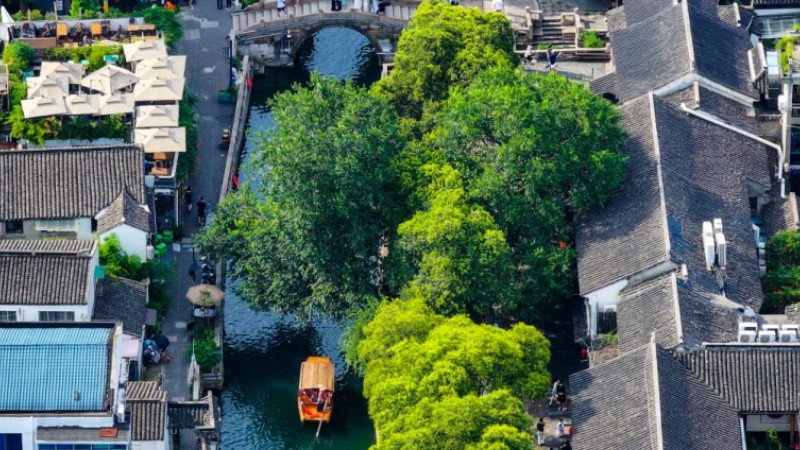Hemp shoes make strides abroad, reviving craft at home

Guo Juan and her husband Niu Junjun check the quality of soles at the factory in Gangu County, northwest China's Gansu Province, Jan. 10, 2020. (Xinhua/Fan Peishen)
LANZHOU, July 7 (Xinhua) -- At a workshop in northwest China's Gansu Province, Wang Xiaoxia is busy turning hemp fiber into twine using a traditional wooden tool. The twine will later be turned into hemp shoes, a traditional garment that has come into fashion in overseas markets, including Japan, the Republic of Korea, Malaysia and Italy.
"I inherited this tool from my mom. In the past, almost every household made and wore hemp shoes in our village," said the 57-year-old worker.
Wang was overjoyed when she learned that the old handicraft was now popular among foreigners, bringing her a monthly income of over 2,000 yuan (about 278 U.S. dollars).
China is one of the first countries to cultivate hemp plants for making shoes. With its good moisture absorbance and durability, hemp has been used to make ropes, shoes and hats in China since ancient times.
The tradition of making hemp shoes dates back a thousand years in Gangu County in the city of Tianshui, Gansu Province. In 2017, the traditional craft was recognized as an item of intangible cultural heritage within the province.
The Gansu Yaluren hemp handicraft development company, where Wang works, participated in this year's Canton Fair, also known as the China Import and Export Fair.
Niu Junjun, the company's chairman, is sanguine about their products' sales prospects overseas. "In the first quarter of this year, we sold more than 7 million yuan of hemp products. Many foreign trade dealers are interested in our products," he said.
Niu, a native in Gangu County, has grown up wearing local hemp shoes. During his college years, he started to sell local specialties online via China's leading e-commerce platform Taobao. "Hemp shoes were the most sought-after for their unique design and material," he recalled.
In 2011, Niu and his wife Guo Juan returned to his hometown, specializing in selling hemp shoes while learning the old craft from scratch.
"The hemp shoes I wore when I was a child were comfortable enough, but the design was outdated. The key to success is more investment in developing new shoes and making innovations," Niu said. The company now pools more than 300,000 yuan annually into developing new designs.
With more than 180 different styles launched, the company's hemp shoes have become a trendy item. In 2021, in collaboration with the renowned Palace Museum, the company designed and rolled out hand-made hemp shoes with signature elements from the museum's cultural relics.
The local government has also provided the company with funding of more than 1 million yuan every year to support their vocational skills training and the further development of relevant industries.
Since 2015, the company has launched free training courses for local residents, helping cultivate a group of inheritors of the ancient craft. "We are in charge of providing local women with raw materials, the necessary techniques and orders for hemp products. It is a 'one-stop' service," said Guo.
Photos
Related Stories
- Sophisticated ornaments showcase China's ancient filigree inlay skills
- Scenery of two rivers meeting at Liujiaxia Reservoir in China's Gansu Province
- How to make a traditional Chinese loom
- China's Gansu launches rail-sea transport service to ROK
- Trade between China's Gansu, Belt and Road countries continues to surge
- Jiayu Pass scenic spot witnesses travel boom
Copyright © 2023 People's Daily Online. All Rights Reserved.









